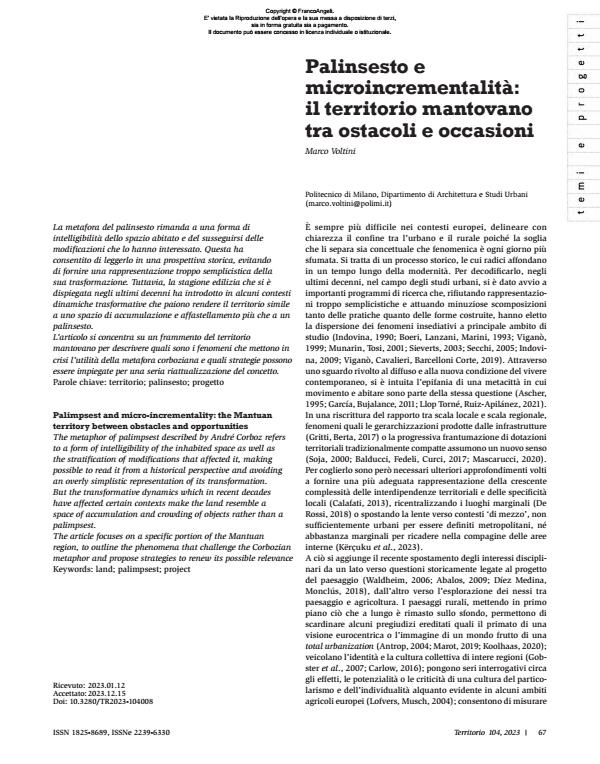Palimpsest and micro-incrementality: the Mantuan territory between obstacles and opportunities
Journal title TERRITORIO
Author/s Marco Voltini
Publishing Year 2024 Issue 2023/104
Language Italian Pages 9 P. 67-75 File size 345 KB
DOI 10.3280/TR2023-104008
DOI is like a bar code for intellectual property: to have more infomation
click here
Below, you can see the article first page
If you want to buy this article in PDF format, you can do it, following the instructions to buy download credits

FrancoAngeli is member of Publishers International Linking Association, Inc (PILA), a not-for-profit association which run the CrossRef service enabling links to and from online scholarly content.
The metaphor of palimpsest described by André Corboz refers to a form of intelligibility of the inhabited space as well as the stratification of modifications that affected it, making possible to read it from a historical perspective and avoiding an overly simplistic representation of its transformation. But the transformative dynamics which in recent decades have affected certain contexts make the land resemble a space of accumulation and crowding of objects rather than a palimpsest. The article focuses on a specific portion of the Mantuan region, to outline the phenomena that challenge the Corbozian metaphor and propose strategies to renew its possible relevance
Keywords: land; palimpsest; project
Marco Voltini, Palinsesto e microincrementalità: il territorio mantovano tra ostacoli e occasioni in "TERRITORIO" 104/2023, pp 67-75, DOI: 10.3280/TR2023-104008